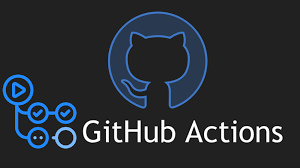Mastering CI/CD with GitHub Actions
 Snigdha Chaudhari
Snigdha Chaudhari
Continuous Integration and Continuous Deployment (CI/CD) are essential practices in modern software development, ensuring that your code is always in a deployable state. GitHub Actions, a powerful CI/CD tool, allows you to automate your workflows directly within your GitHub repository. This blog will dive into how GitHub Actions works, why it’s beneficial, and compare it with Jenkins, another popular CI/CD tool.
What are GitHub Actions?
GitHub Actions is an automation tool that integrates directly with your GitHub repositories. It allows you to define workflows using YAML syntax, which can be triggered by various events like push, pull requests, or even scheduled events. These workflows can include a series of jobs and steps, automating tasks such as building, testing, and deploying code.
Advantages of GitHub Actions
Integrated Environment: Since GitHub Actions is hosted by GitHub, it runs directly in your GitHub repository, providing a seamless experience.
Ease of Use: The UI is simple and integrated within GitHub, making it easy to set up and manage workflows.
Cost-Effective: GitHub Actions is free for open-source and public projects, making it a cost-effective solution for many developers.
Extensibility: With a rich marketplace of pre-built actions, you can easily extend the capabilities of your workflows without writing custom code.
GitHub Runners: Docker Containers in Disguise
GitHub Actions uses runners to execute your workflows. These runners are like Docker containers, providing an isolated environment for your jobs. GitHub offers both GitHub-hosted runners and the option to use self-hosted runners.
GitHub-hosted Runners
GitHub-hosted runners are managed by GitHub and run directly within the GitHub environment. They are free for open-source and public projects, making them an excellent choice for these types of repositories. However, if you have specific requirements or want to maintain control over the runner environment, you might consider using self-hosted runners.
Self-hosted Runners
Self-hosted runners give you the flexibility to run your jobs on your own infrastructure. This is particularly useful for private repositories or projects that require high-performance runners with custom configurations. In Jenkins terminology, self-hosted runners are akin to worker nodes or agents.
Why Use Self-hosted Runners?
Control and Customization: Self-hosted runners allow you to customize the runner environment to meet your specific needs.
Performance: You can leverage powerful hardware and optimized configurations to speed up your CI/CD processes.
Security: For private repositories, self-hosted runners ensure that your code and data remain within your own infrastructure.
GitHub Actions vs. Jenkins
While both GitHub Actions and Jenkins are popular CI/CD tools, they cater to different needs and use cases.
GitHub Actions
Hosting: Hosted by GitHub and runs directly in your GitHub repository.
UI: Simple and integrated within the GitHub interface.
Cost: Free for open-source and public projects.
Best For: Open-source projects or those that plan to stay within the GitHub ecosystem.
Jenkins
Hosting: Self-hosted, requiring its own server to run.
UI: More complex and requires additional setup and maintenance.
Cost: Requires infrastructure and maintenance costs.
Best For: Projects needing extensive customization and those already integrated with other Jenkins pipelines.
Setting Up GitHub Actions
Now that we understand the benefits of GitHub Actions, let’s dive into how to set it up. To get started with GitHub Actions, you'll need to create a YAML file inside the .github/workflows folder in your repository. This file defines the workflow that GitHub Actions will execute. Here’s a basic example of a GitHub Actions workflow file:
name: CI
on:
push:
branches:
- main
jobs:
build:
runs-on: ubuntu-latest
steps:
- name: Checkout code
uses: actions/checkout@v2
- name: Set up Node.js
uses: actions/setup-node@v2
with:
node-version: '14'
- name: Install dependencies
run: npm install
- name: Run tests
run: npm test
In this example, the workflow is triggered on a push to the main branch. The jobs section defines a job named build that runs on the latest version of Ubuntu. The job consists of several steps: checking out the code, setting up Node.js, installing dependencies, and running tests.
Conclusion
GitHub Actions offers a seamless and powerful way to implement CI/CD within your GitHub repositories. With its easy setup, integrated UI, and flexibility with self-hosted runners, it’s an excellent choice for many projects, especially open-source ones. However, for highly customized or large-scale enterprise environments, Jenkins might still be the preferred option.
By understanding the strengths and use cases of both tools, you can choose the best CI/CD solution for your project. Happy coding and automating!
Subscribe to my newsletter
Read articles from Snigdha Chaudhari directly inside your inbox. Subscribe to the newsletter, and don't miss out.
Written by

Snigdha Chaudhari
Snigdha Chaudhari
Hi there! 👋 I’m a passionate Cloud Enthusiast and AWS Certified Solutions Architect – Associate, exploring and sharing the limitless possibilities of cloud computing. With hands-on experience in tools like Docker, Kubernetes, Terraform, and Python, I love simplifying complex cloud concepts for developers, tech enthusiasts, and businesses alike. On this blog, you’ll find: 🌟 Insights and tutorials on cloud technologies 🌟 Tips to optimize your DevOps practices 🌟 Stories of overcoming real-world tech challenges When I’m not diving into the cloud, you’ll find me exploring new tools, sharing tech tips, or brainstorming ways to build scalable, efficient infrastructure. Let’s connect, learn, and grow together in this ever-evolving tech space! 🚀